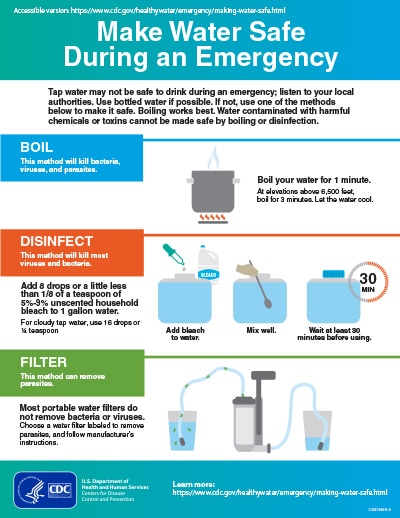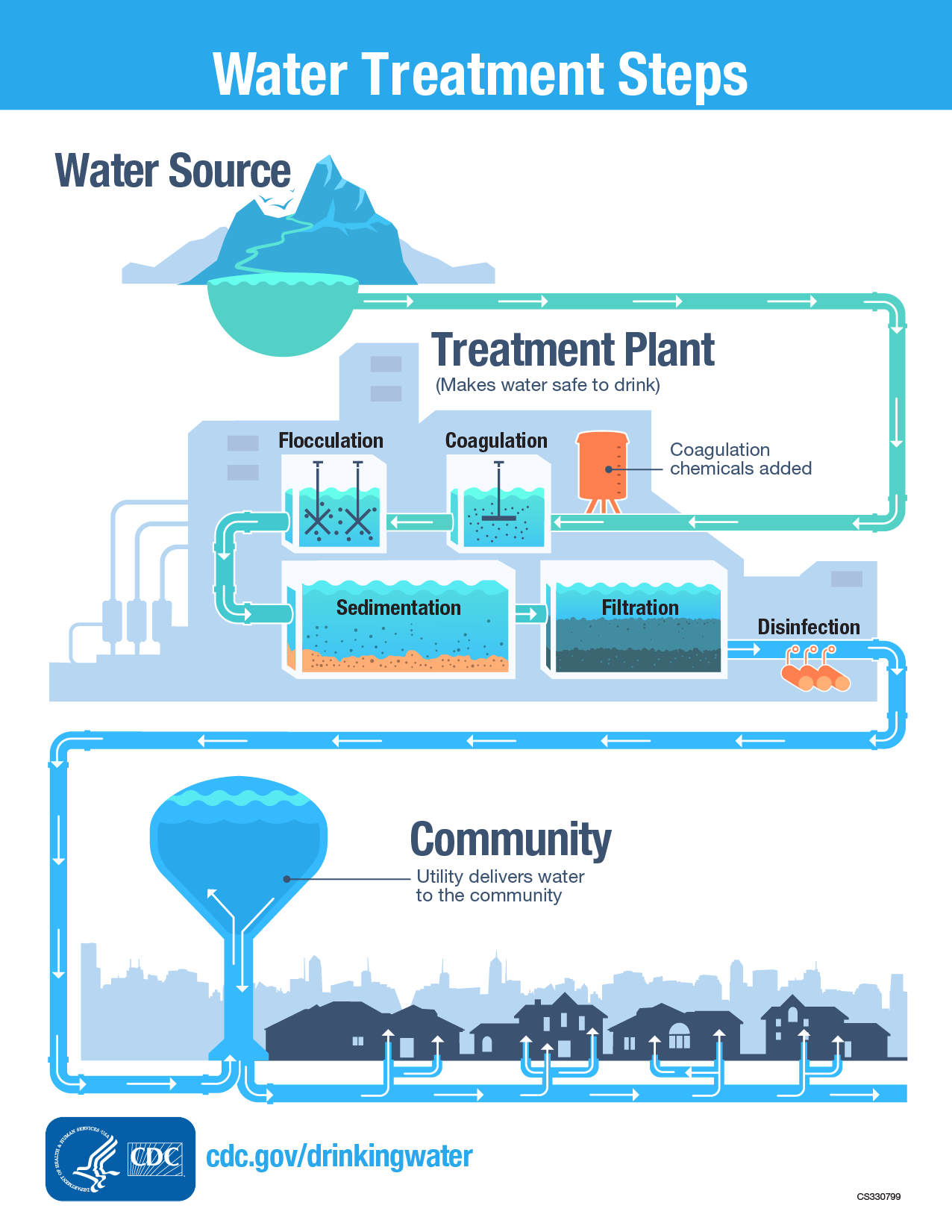Clean, safe drinking water is essential for everyone’s health and wellbeing. Unfortunately, tap water can often become contaminated with bacteria, viruses, and other microorganisms that can cause serious illnesses. That’s why it’s important to know the best way to disinfect tap water. In this article, we’ll discuss how to properly disinfect tap water, from chemical-free methods to more advanced techniques.
Whether you’re looking to make sure your water is safe before drinking it, or if you want to use it to clean dishes, knowing how to disinfect tap water is an important skill. Disinfecting your water can help reduce the risk of exposure to dangerous microorganisms, and can help ensure that you and your family are drinking safe, clean water. So, let’s take a closer look at how to disinfect tap water.

How to Disinfect Tap Water?
Tap water can contain harmful contaminants that have the potential to make us sick. To help protect against this, it’s important to understand how to properly disinfect tap water. In this article, we’ll provide the steps needed to make sure your tap water is safe to consume.
Step One: Boil the Water
The simplest and most effective way to disinfect tap water is to boil it. Boiling tap water for 1 minute should be enough to kill any contaminants and make the water safe to drink. It’s important to let the water cool down before drinking, as boiling water will be too hot for consumption.
One thing to keep in mind is that boiling the water won’t remove any solids, so if your tap water is cloudy or has particles in it, you should filter it first before boiling. Additionally, boiling the water won’t remove any chemicals or heavy metals, so you may want to take further steps to ensure the water is safe to drink.
Step Two: Add Chlorine
Adding a small amount of chlorine-based disinfectant is another effective way to make tap water safe to drink. This can be done by adding 8 drops of regular household bleach to a gallon of water. The water should then be stirred and left to sit for 30 minutes before it’s safe to drink.
Be sure to check the label of your bleach to make sure it contains at least 5.25-6.15% sodium hypochlorite as this is what makes the bleach effective as a disinfectant. Additionally, you should always make sure to use food-grade bleach as this will not contain any additional chemicals that could be harmful to your health.
Step Three: Use Ultraviolet Light
Using ultraviolet (UV) light is another way to disinfect tap water. This method involves exposing the water to UV light for a certain amount of time to deactivate any contaminants. This is usually done with a UV light system that is attached to your home’s water supply.
UV light systems are usually very effective at disinfecting tap water, but they can be quite expensive to install and maintain. Additionally, the effectiveness of a UV light system will depend on the type of contaminants present in the water.
Step Four: Filter the Water
Filtering tap water can also be a good way to make it safe to drink. There are a variety of filters available that are designed to remove different types of contaminants. For example, some filters are designed to remove bacteria and viruses, while others are designed to remove chemicals and heavy metals.
When selecting a filter, it’s important to make sure it is certified by an independent testing organization, such as NSF International, to ensure it is effective at removing the contaminants you are most concerned about. Additionally, it’s important to follow the manufacturer’s instructions for care and maintenance of the filter to ensure it remains effective.
Step Five: Use Distillation
Distillation is another way to make tap water safe to drink. This involves boiling the water and collecting the steam, which leaves behind any contaminants that may be present in the water. This method is usually quite effective, but it can be quite time consuming and is often only used when other methods are not available.
Distillation is also quite energy intensive, so it’s important to make sure you are using an energy efficient distillation system to help reduce your environmental impact. Additionally, it’s important to make sure the distillation system is regularly cleaned and maintained to ensure it remains effective.
Frequently Asked Questions: How to Disinfect Tap Water?
Tap water can become contaminated with a variety of microorganisms and chemicals, making it unsafe for human consumption. Disinfecting tap water is an effective way to ensure that it is safe for drinking, cooking, and other uses. In this article, we will answer some of the most common questions related to the disinfection of tap water.
What are the Benefits of Disinfecting Tap Water?
The primary benefit of disinfecting tap water is that it helps to ensure that it is safe for human consumption. By killing any potentially harmful microorganisms, such as bacteria and viruses, disinfecting tap water can help to reduce the risk of developing a waterborne illness. Additionally, disinfecting tap water can reduce the presence of certain chemicals, such as chlorine and lead, which can be hazardous to consume.
How Can Tap Water be Disinfected?
Tap water can be disinfected in a variety of ways. Boiling tap water is one of the most common methods of disinfection, as it is effective at killing any microorganisms and bacteria that may be present. Additionally, chemical disinfectants, such as chlorine and ultraviolet light, can also be used to disinfect tap water.
What are Some Common Disinfectants for Tap Water?
The most common disinfectants for tap water are chlorine and ultraviolet light. Chlorine is an effective disinfectant, and can be added to tap water in small amounts to ensure that any potentially harmful microorganisms are killed. Ultraviolet light is another effective method of disinfection, as it can penetrate deep into the water, killing any microorganisms that may be present.
Are There Any Other Ways to Disinfect Tap Water?
Yes, there are other ways to disinfect tap water. Ozonation is a method of disinfection that uses ozone gas to kill any microorganisms in the water. Additionally, filtration is another effective method of disinfection, as it can remove any particulates or contaminants that may be present in the water.
What are the Potential Risks of Disinfecting Tap Water?
When disinfecting tap water, it is important to ensure that the correct methods and amounts are used. If too much disinfectant is used, it can have adverse effects on human health. Additionally, if certain disinfectants, such as chlorine, are not monitored correctly, they can create by-products that can be hazardous to consume. Therefore, when disinfecting tap water, it is important to ensure that all safety measures are followed.

Disinfecting Drinking Water with Chlorine
In conclusion, disinfecting tap water is an important part of making sure your water is safe to drink. By using a water filter, boiling water, adding chlorine, or using ultraviolet light, you can make sure your tap water is free from harmful bacteria and viruses. Additionally, it is important to regularly check your water for contamination or other impurities. By following these steps, you can make sure that your tap water is safe for drinking and other uses.
With the right tools, knowledge, and diligence, it is possible to make sure that your tap water is safe for drinking and other uses. By taking the time to disinfect your tap water, you can make sure that your family is safe from waterborne illnesses and that your tap water is of the highest quality.
